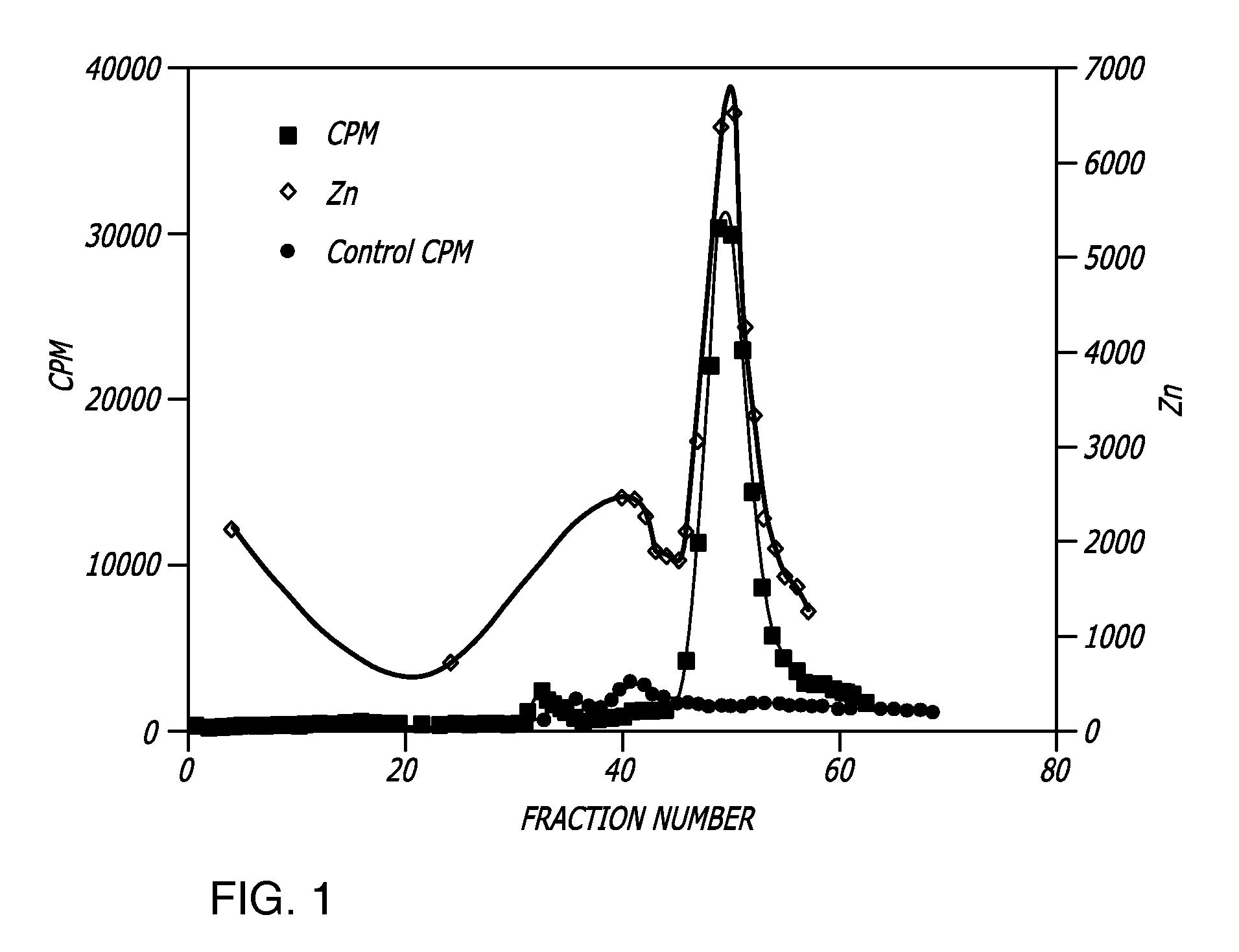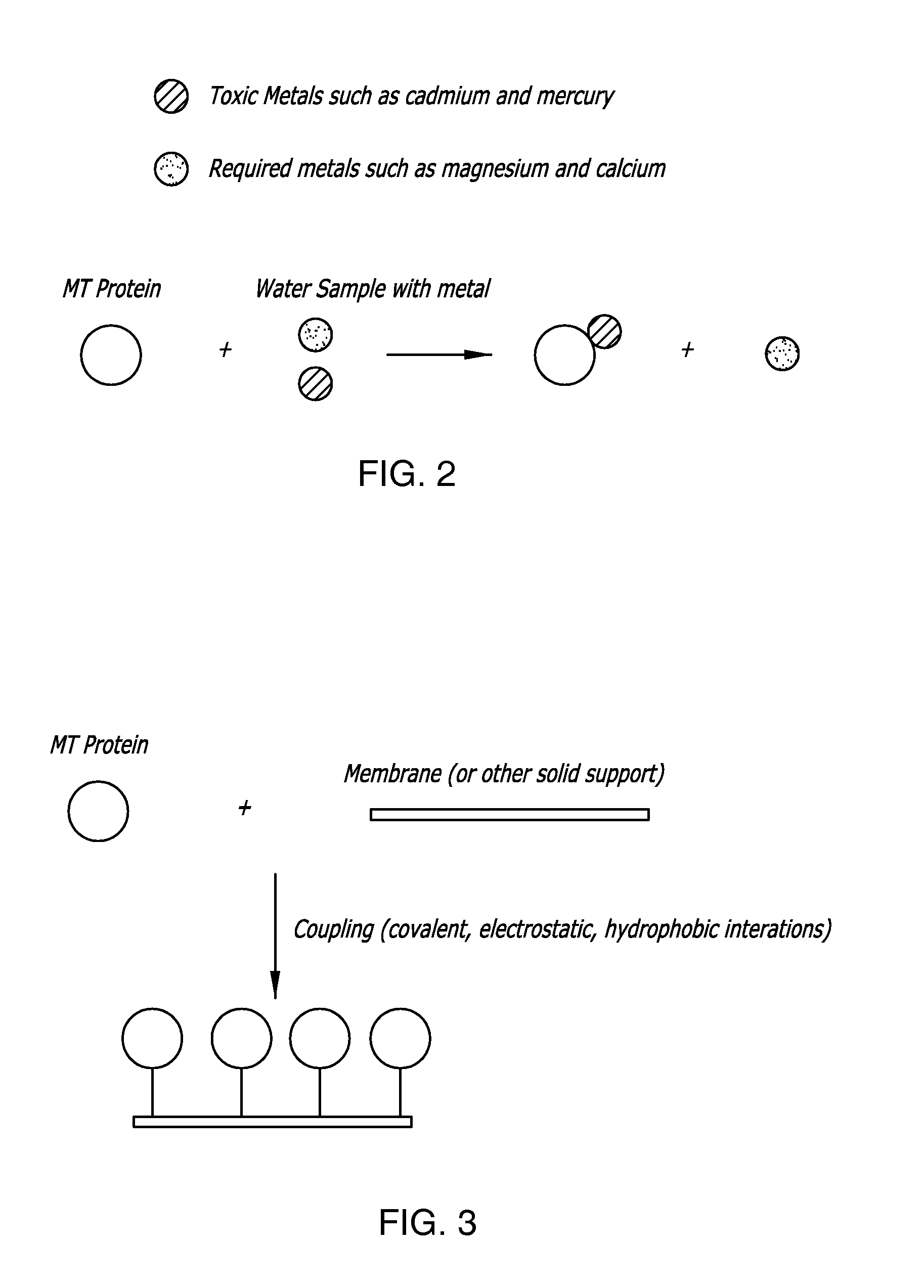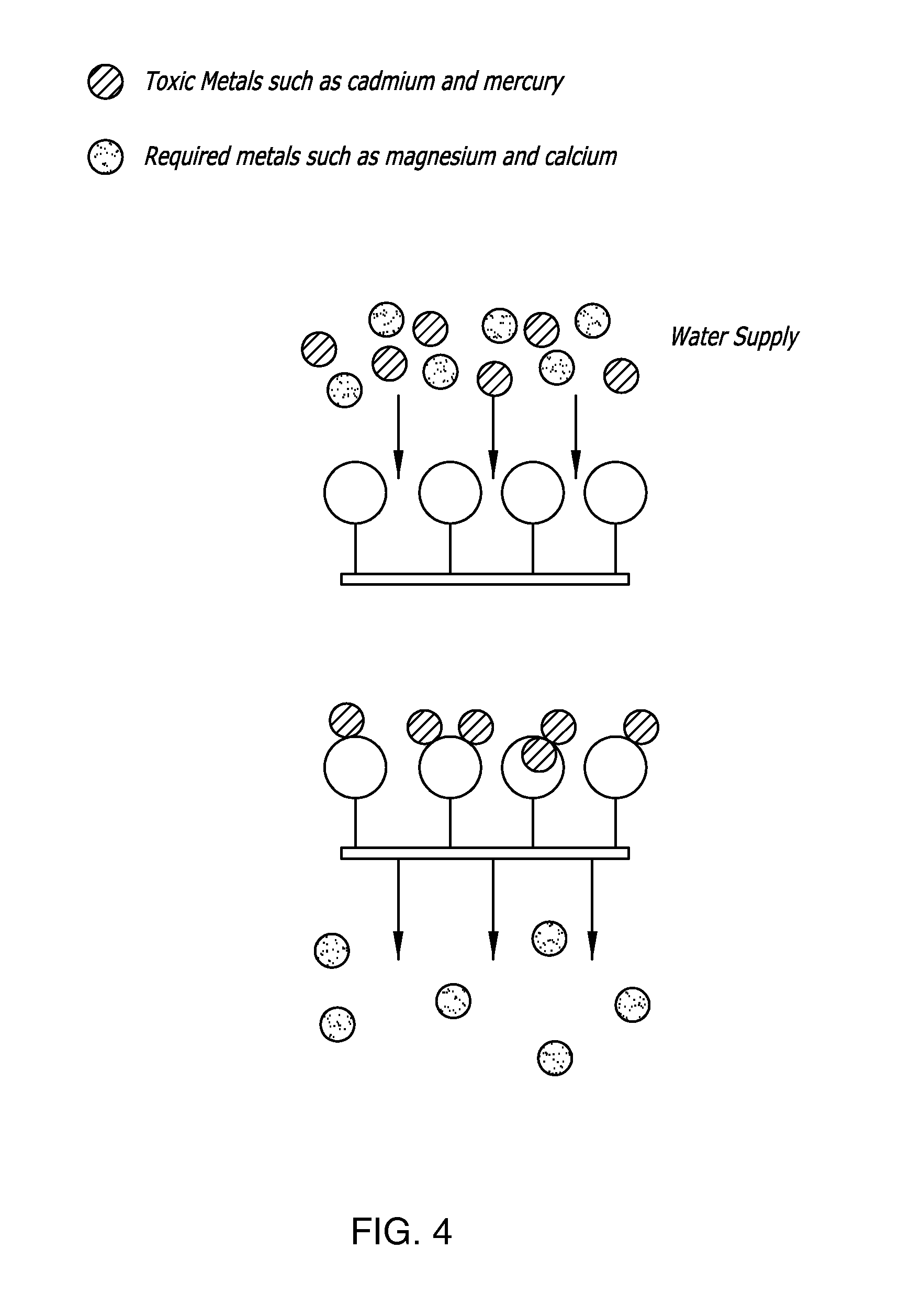Thimerosal removal device
a technology of thimerosal and thimerosal sulfate, which is applied in the direction of medical devices, nuclear engineering, peptides, etc., can solve the problems of uncertainty that arises in applying the methylmercury-based guidelines to thimerosal, and the evidence is insufficient to either accept or rej
- Summary
- Abstract
- Description
- Claims
- Application Information
AI Technical Summary
Benefits of technology
Problems solved by technology
Method used
Image
Examples
example 1
Isolation of MT from Artemia
[0093] In accordance to the teachings of the present invention, the following exemplary protocols illustrate methods useful in the production, purification and analysis of MT proteins.
[0094] As a preliminary step in the isolation of the metal binding proteins, Artemia brine shrimp were grown in artificial seawater (AS) (422.7 mM NaCl, 7.24 mM KCL, 22.58 mM MgCl2.6H2O, 25.52 mM MgSO4.7H2O, 1.33 mM CaCl2.2H2O and 0.476 mM NaHCO3). Artemia cysts (2.5 g) were incubated for 48 hours in 250 mL of AS supplemented with antibiotics at 30° C. and rotation at 125 rpm. After 24 hrs, phototropic Artemia were collected, cultured for an additional 24 hrs and then collected by cloth filtration. The shrimp were weighed and if not used immediately, stored at −80° C.
[0095] The Artemia were then homogenized in homogenization buffer (HB) (10 mM Tris-HCl (pH 8.0), 0.1 mM DTT, 0.5 mM PMSF and 10 μg / ml Soybean Trypsin Inhibitor) and resuspended in HB at 4 ...
example 2
Cloning and Sequencing of a Gene Encoding Artemia Metal Binding Protein
[0099] Total RNA was isolated from 48 hour nauplii (the larval stage of Artemia) using the RNAzol method. Forty-eight hour nauplii samples were prepared as described above in Example 1. The PolyTract Procedure (Promega, Wis.) was then used to isolate mRNA from the total RNA samples. cDNA was generated from the mRNA using SuperScript and 3′ RACE Kit procedures (Cat #18373, Gibco / BRL, WI) and then subjected to the following synthesis reaction.
[0100] cDNA synthesis reaction: [0101]Artemia mRNA 25 μl (500 ng) [0102] DEPC H2O 30 μl [0103] 10 μM AP 5 μl
[0104] The above mixture was incubated for 10 min at 70° C., then placed on ice for 1-2 min. Volatilized liquid was collected by centrifugation for 10 sec at 10,000 rpm. The following were then added to the above RNA cocktail to produce a cDNA solution: [0105] 10×PCR Buffer 10 μl [0106] 25 mM MgCl2 10 μl [0107] 10 mM dNTP 5 μl [0108] 0.1 mM DTT 10 μl
[0109] The above ...
example 3
Polymer Membranes for Toxic Metal Removal from Water
[0133] Metallothionein was extracted from Artemia embryos as described above. The protein extract (80 mL) was placed in a boiling water bath for 15 minutes. The solution was centrifuged at 30,000×g (16,000 rpm in a SA600 rotor) for 30 minutes at 4° C. The supernatant containing the metallothionein was transferred to a clean tube containing 60 μL of 109Cd (Amersham Biosciences). The solution was mixed well and allowed to stand at room temperature for five minutes. This allows for exchange of the radioactive cadmium onto the metallothionein and provides us with a method for detecting the protein during its purification. The solution was then applied to a 100×4.8 cm G-50 molecular exclusion column and eluted with nitrogen saturated 50 mM Tris, pH 8.0. Fifteen milliliter fractions were collected into tubes containing 25 μL of 1M DTT. The fractions with peak metal binding activity were pooled and stored at 4° C. The solution is referre...
PUM
| Property | Measurement | Unit |
|---|---|---|
| pH | aaaaa | aaaaa |
| pH | aaaaa | aaaaa |
| temperature | aaaaa | aaaaa |
Abstract
Description
Claims
Application Information
 Login to View More
Login to View More - R&D
- Intellectual Property
- Life Sciences
- Materials
- Tech Scout
- Unparalleled Data Quality
- Higher Quality Content
- 60% Fewer Hallucinations
Browse by: Latest US Patents, China's latest patents, Technical Efficacy Thesaurus, Application Domain, Technology Topic, Popular Technical Reports.
© 2025 PatSnap. All rights reserved.Legal|Privacy policy|Modern Slavery Act Transparency Statement|Sitemap|About US| Contact US: help@patsnap.com



